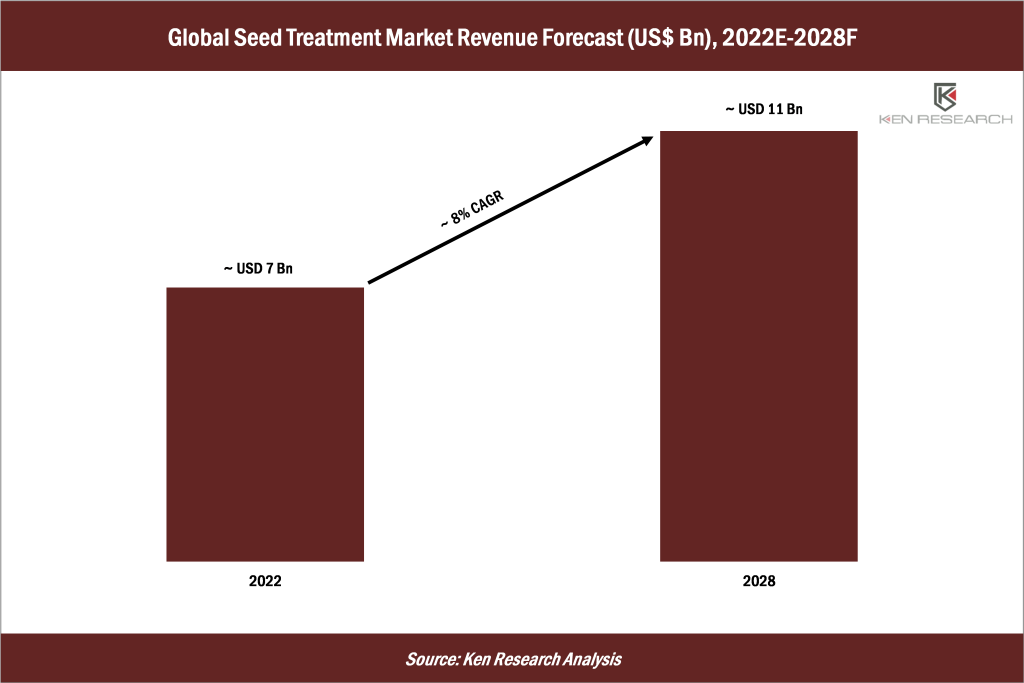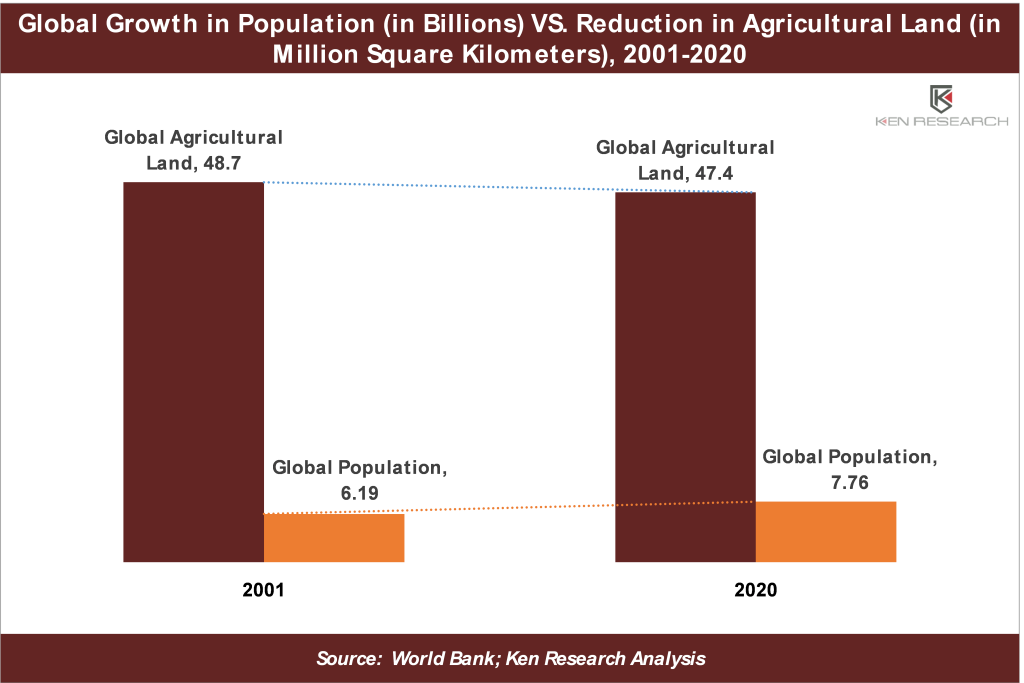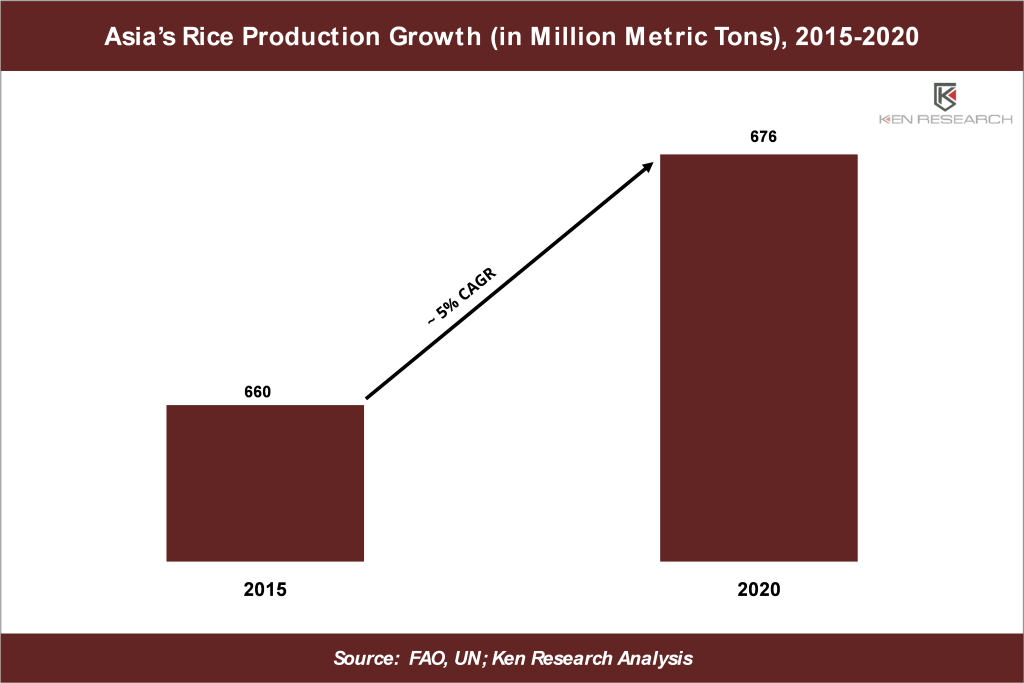Driven by the Benefits of Low-Cost Crop Protection and Improved Germination Potential of Seeds, the Global Seed Treatment Market is Forecasted to Cross US$ 11 Bn by 2028, says Ken Research Study.
Agricultural farms and farmers worldwide are always looking for ways that would help increase their yield and combat the adverse effects of an uncertain climate on their crops. Seed treatment procedures are providing that opportunity at a low cost and easy-to-manage way. Seed treatment can be deployed on a variety of crops, including grains and cereals, oilseeds and pulses, fruits and vegetables, and a host of other crop types. The treatment techniques, including the dressing, coating, and pelting of seeds, serve both the purposes of seed protection and seed enhancement and can be carried out in a chemical or non-chemical way.
According to Ken Research estimates, the Global Seed Treatment Market –estimated to be of a size of nearly US$7 Bn in 2022 – is expected to grow further into a more than US$ 11 Bn opportunity by 2028. Ken Research shares 5 key insights on this expanding market from its latest research study”.
1. With Key Global Players Investing Heavily in R&D, the Seed Treatment Market is Expected to Witness a Steady Surge in Size
Stakeholders associated with the Agricultural Industry are keen to leverage the opportunities that science and technology have brought to them. Large global players, like Bayer, and Syngenta, are investing heavily in R&D to launch new, efficient products and solutions that would meet this growing demand, resulting in a steady expansion of the overall market.
In 2021, BASF spent around US$1 Billion in R&D in the Agricultural Solutions segment of its business. According to reports published by Bayer AG in March 2021, the company had an annual investment of around US$2 billion in its Crop Science R&D. Another well-known global player in the field of protecting crops and seeds through scientific means, Syngenta Global, declared an annual investment of US$1.3 billion in R&D.
Such high-value investments in science, technology, and innovation are prompting the end users to leverage advanced solutions that are more efficient and cost-effective.
2. With the Global Population Rising, Meeting the Growing Demand for Food Requires Efficient Agricultural Techniques
The global population is rising at a rapid pace. Between 2001 and 2020, the world population rose from 6.19 billion to 7.76 billion, according to World Bank data. During the same time, the world witnessed a significant decrease in agricultural land, depleting from more than 48.7 million sq. Km in 2001 to nearly 47.4 million sq. Km in 2020. Producing more food from less arable land is a challenge that requires seeds with high germination potential and high levels of immunity against pests, insects, diseases, and adverse weather. Proper treatment empowers the seeds to achieve these properties.
3. Global Soybean Market Experienced a Dip in 2019 and is on the Path to Recovery Since then, Boosting Demand for Seed Treatment
Oilseeds and Grains are one of the most significant crop categories to go through well-structured seed treatment procedures. According to data presented by the Soybean Processors Association of India (SOPA), more than 50% share of World Oilseeds production is occupied by Soybeans alone. During the 2019-2020 period, Soybean production across the globe saw a significant dip. It even went below the 2017-2018 levels. However, the production of soybean made significant recoveries in both the consequent years of 2020-2021 and 2021-2022. In the forecasted period, it is expected that efficient seed treatment methods would play a crucial role in keeping the production growth rate intact.
Request for Sample Report @ https://www.kenresearch.com/sample-report.php?Frmdetails=NTk2MDEx
4. Huge Production of Rice in the Asia Pacific Makes it a High Opportunity Market for Seed Treatment Companies
Although North America – being one of the earliest adopters of seed treatment methods – dominates the global market, the consistently increasing production of rice in Asia-Pacific is also expected to boost the demand for seed treatment to a significant extent in the region. Rice production in Asia grew by more than 16 million metric tons between 2015 and 2020.
Key global players are launching new products and solutions to efficiently leverage this market. For instance, Corteva Agriscience, the first company to introduce treated seeds in India, is soon coming up with solutions that would protect paddy crops from pest attacks and increase productivity. In 2019, Bayer AG launched Routine Start in the Chinese market as the first dry rice seed treatment product, offering protection from rice blast disease and rice bakanae disease.
For more information on the research report, refer to the below link:
Global Seed Treatment Industry 2028: Ken Research
Follow Us
LinkedIn | Instagram | Facebook | Twitter
Contact Us: –
Ken Research
Ankur Gupta, Head Marketing & Communications
+91-9015378249





No comments:
Post a Comment